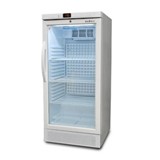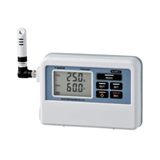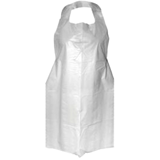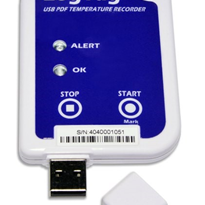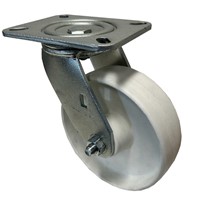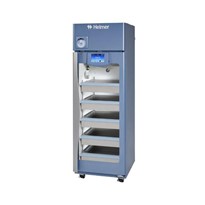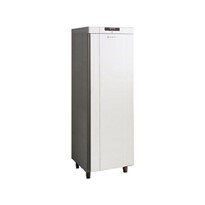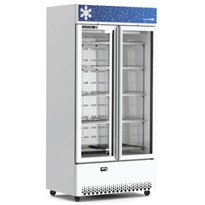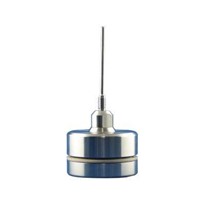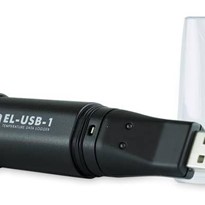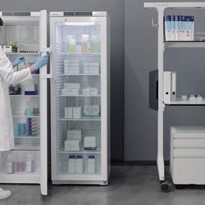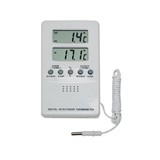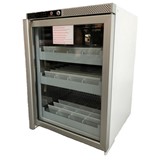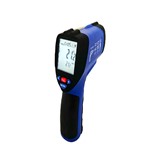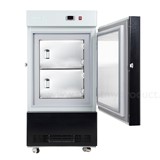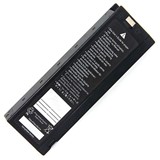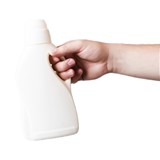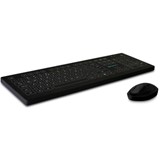A medical fridge with a high temperature reading poses a real danger to the integrity and safety of temperature sensitive medical products, resulting in potentially life-saving medications being destroyed. In this article we will explain medical fridge temperature requirements, how to monitor fridge temperature, what is considered a high temperature reading, and what to do in the event of a high temperature reading.
What Is Considered a High Temperature Reading in a Medical Fridge?
A high temperature reading in a medical fridge is anything over 8°C as stipulated by the cold storage guidelines. To keep temperature sensitive medical products safe and viable, they must be stored within strict temperature parameters of 2°C and 8°C. Any variation outside these specific requirements will affect their potency and usefulness. Exposure to temperatures higher than 8°C or lower than 2°C for 15 minutes or more is called a cold chain breach.
Effect of High Temperature Reading in Medical Fridge
A high temperature reading can have disastrous effects on medications and biological products stored in a medical fridge. Because they contain biological matter, medications, vaccines and biological samples degrade quickly when exposed to temperature ranges over 8° C. If the exposure is under 15 minutes, they may have a shortened shelf life as a result of the heat exposure. Above 15 minutes and these medical products will become nonviable.
How To Monitor Medical Fridge Temperature
To ensure the safety and efficacy of medications, it is essential to monitor the temperature of your medical fridge to make sure the temperature does not get too high or low. We look at the two main methods for effectively monitoring a medical fridge temperature.
- Manual monitoring
The manual monitoring method is simple and reliable. To manually check the temperature in a medical fridge requires a HACCP approved thermometer or temperature sensor with a real-time display. Staff members are usually assigned the job of monitoring the temperature on a regular basis twice daily, using the thermometer or temperature sensor. They record the current, minimum and maximum temperatures. - Digital monitoring
Digital monitoring can be done in two ways, one with a basic data logger and the other with automatic cloud connected loggers. Both types of digital monitoring devices record temperature readings on a regular basis at set intervals.
A basic data logger is a semi automatic logger that continuously monitors the temperature in the medical fridge. The data is then downloaded to a computer for analysis. This semi automated logger only requires manual intervention with the downloading of the recorded data.
Fully automated loggers are cloud connected data loggers that connect to the cloud and wirelessly save the temperatures from your fridge to the internet every few minutes. That means you never need to touch the logger or remove it from the fridge. They provide real time alerts in the event of a temperature fluctuation. These alerts are sent via sms, email or phone so that any breaches can be addressed straight away.
What to Do In The Event of a High Temperature Reading
If the medical fridge has a high temperature reading, there is a strict protocol to follow in the event of a cold chain breach. As certain medicines, vaccines and biological samples cannot last at higher temperatures beyond 15 minutes, it is important to act quickly. This is the protocol to follow in the event of a high temperature reading.
- Find the source of the high temperature. It could be the door is opened too often, a power outage, the fridge is overly stocked, or inadequate ventilation. Identifying why the temperature has risen will help with cold chain breach management.
- In the event of a power outage or temporary temperature fluctuation, seal the fridge door to make sure no cold air can escape. Place a sign or note on the refrigerator door advising employees that the refrigerator should be left untouched. Advise staff not to open the refrigerator door as this will cause temperature fluctuation.
- Monitor the temperature to see if it is starting to convert back to a safe temperature within the safe period of 15 minutes. In the event that the fridge has been opened too often, simply keeping the fridge door closed may fix the problem. If it is a power outage, more extreme measures may be required.
- If the temperature does not look to be stabilising, isolate the medicines, vaccines and biological products and prepare to transfer them into temporary monitored vaccine storage, if necessary. Start conditioning ice or gel packs.
- Be prepared to move medical products to an alternative facility such as a prepared cooler, cold box, or another medical fridge if the temperature is outside the recommended 8°C. Any of these alternative storage facilities need to have constant temperature monitoring, every 15 minutes. When moving the medical supplies, make sure the vaccine management protocols are adhered to, and that they continue to be stored in the appropriate temperature range between 2°C and 8°C.
How to Keep Medical Fridge at Safe Temperature
Keeping a medical fridge at a safe temperature is essential for the successful storage of fragile medicines, vaccines and biological products. By following a few principles and strategies, you can make sure your medical fridge is always at a temperature conducent with safely storing temperature sensitive biological products. To keep a medical fridge at a safe temperature you must:
- Regularly check the fridge temperature. Make sure you regularly check the fridge temperature manually at least twice a day. If the temperature is outside the recommended range, immediately implement the cold chain protocol.
- Reset the manual thermometer after each reading. Make sure you reset the thermometer after each reading to ensure it is registering the correct temperature. Usually this is done by pressing the button until it is reset.
- Avoid opening the fridge door. A medical fridge door should be opened as little as possible to avoid temperature fluctuations. Because the medication is so temperature sensitive, it cannot afford to have consistent ambient temperature changes. Check the temperature every time the fridge is opened to make sure there has not been any marked change.
- Use a data logger. A data logger is an automated temperature logger that is connected to the cloud. It checks the temperature every 5 to 10 minutes and downloads each data reading.
- Don’t overload the fridge and keep it clean. Make sure the fridge is well organised and clean. A fridge that is not regularly cleaned or has medications that are too crowded is more prone to temperature fluctuation.
- Make sure it is well ventilated. Without the correct ventilation, a medical fridge will overheat and not be able to cool properly. You must make sure there is plenty of ventilation around the medical fridge to avoid overheating. That means about 100mm clearance around the back and sides of the fridge.
- Make sure it is regularly serviced. Regular servicing and calibration will help avoid any potential issues that may cause the medical fridge to overheat and result in a cold chain breach.
- Have a UPS battery backup. A medical UPS battery backup is an extra battery that provides backup electricity to medical equipment if there is a problem with the power source. This backup battery can help keep the medical fridge running and avoid any rise in temperature.
- Education and planning. Make sure the staff are educated in cold chain protocol and what to do in the event of a breach. Always have a plan in place for cold chain management.
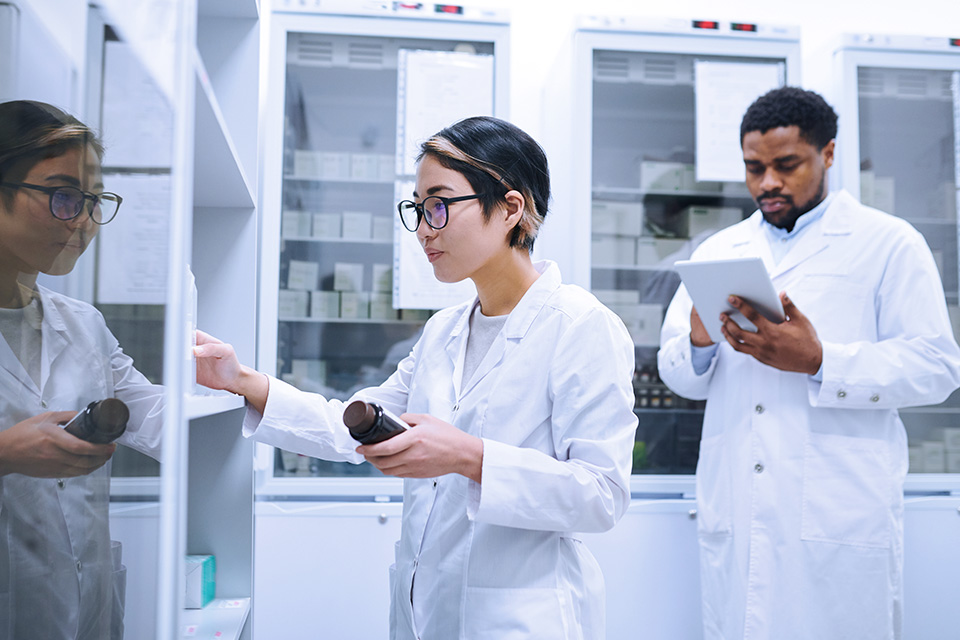
A high temperature reading on a medical fridge is a dangerous occurrence that could result in a cold chain breach and the loss of important and costly medications and biological supplies. In any healthcare facility it is essential to understand what to do in the event of a high temperature reading. Our guide explains what to do if a medical fridge has a high temperature reading, and how to keep temperature sensitive medications, vaccines and biological products safe.



